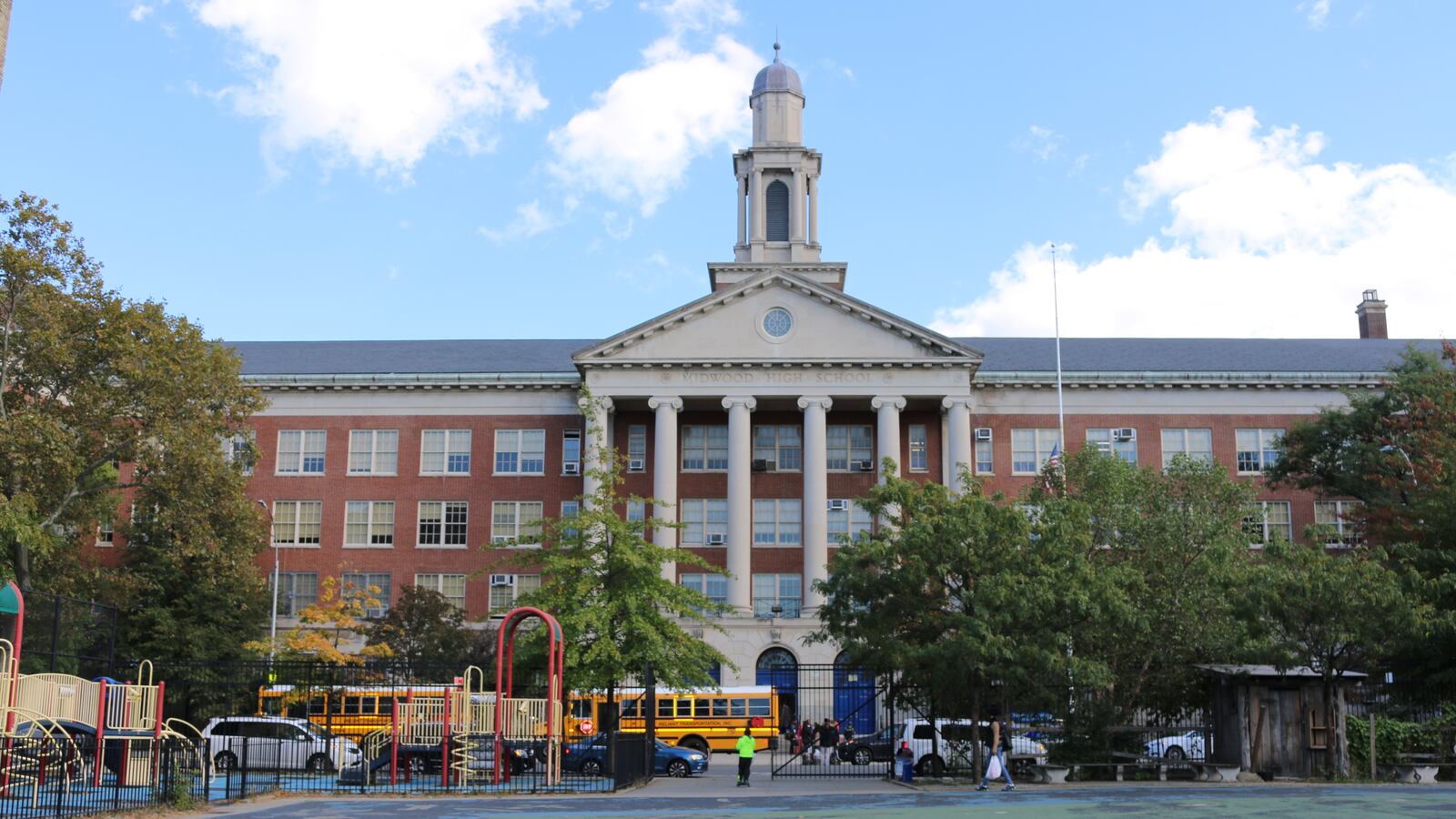When Michelle Noris helped her son apply to public high schools, she knew the city’s directory would not be much use.
Since her son, Abraham, uses a wheelchair and the city’s official list of over 400 high schools contains little information about physical infrastructure, Noris knew she’d have to make phone calls and set up visits to find out whether cafeterias, auditoriums, and even front entrances could accommodate a wheelchair.
“I spent hours and hours on that,” said Noris, a former member of the Citywide Council on Special Education. “It felt like I shouldn’t have to do this.”
Now, after lobbying from Noris and other advocates, the city is starting to release more detailed information about how accommodating its high schools are for students with disabilities — an effort to reduce the burden on those students and their families to figure it out for themselves.
New online profiles indicate whether school bathrooms, gymnasiums, classrooms, libraries, hallways and other spaces are completely accessible on each floor, and if not, what barriers might be present.
They are meant to correct a major challenge for families seeking accessibility information about New York City’s high schools: 62 percent are deemed “partially accessible,” an ambiguous term that is supposed to mean students with disabilities can access “relevant programs,” but in practice gives little sense of the scope of accessibility issues. Just 13 percent of high school buildings are fully accessible, according to 2016 data.
A partially accessible school might have a ramp, but it’s connected to a service entrance designed to transport garbage rather than wheelchairs. A school could have an accessible bathroom, but it’s on the second floor. An auditorium might accommodate a wheelchair, but provide no access to the stage.
In recent months, the education department has posted on its website new “Building Accessibility Profiles” that offer such granular, crucial details — based on a 58-question survey conducted by department employees.
One Upper Manhattan school building, which houses New Design Middle School and two KIPP charter schools, earned one of the highest possible accessibility ratings. But its profile notes that the bathrooms might not be maneuverable; some stalls are missing grab bars; there is no braille signage throughout the building; and some of its hallway doors may be too heavy for students with limited upper body strength. (The reports do not differentiate between schools that share buildings, a concern among some advocates because students at each school may have different accessibility needs.)
For now, the profiles only exist for high school buildings in Manhattan, Staten Island and the Bronx, putting the city behind on its original schedule to have every high school profile available in time for this year’s application season. City officials said they plan to complete profiles for all partially accessible high schools by January, but could not offer a timeline for middle or elementary schools. (The decision to release more high school accessibility data comes almost two years after a scathing U.S. Department of Justice investigation revealed “inexcusable” accessibility problems in elementary schools.)
Experts largely praised the city for beginning to make the high school choice process less onerous for students with disabilities by offering them more information about physical accessibility.
But some also pointed out that the information is difficult to find. The city’s official high school directory only says whether schools are “accessible” or “not accessible,” a potentially misleading indicator given that most schools fall somewhere in between. And the city’s “School Finder” site, essentially a digital version of the directory, does not link to the new accessibility data, though a spokesman said that information will be included in future updates.
“This is all really, really valuable information,” said Maggie Moroff, a special education policy expert at Advocates for Children. “But if families don’t have a way of getting to it easily, it doesn’t do them a whole lot of good.”
The easiest way to get to the information is on the city’s Office of Space Planning website, which lists each school’s accessibility profile.
Still, there are significant upsides to the new data — and not just for parents.
More detailed information about building infrastructure could help the city better-allocate capital funding to schools that might only need modest improvements to become significantly more accessible, Moroff said. The city’s current five-year capital plan includes $100 million for such improvements.
“We work diligently with families and school communities to ensure every student has a seat at a school that meets their accessibility needs,” said education department spokesman Michael Aciman.
While Noris, the parent and disability advocate, said she would have loved the additional information when she was searching for a high school for her son, she’s glad her advocacy paid off. She used to carry around mock surveys to show city officials what kinds of information would have helped her, and even used the surveys to rate a few schools, partly to show that useful information about buildings could be extracted in under an hour.
So when Noris saw the data appear on the city’s website, she couldn’t help but feel like she played a role.
“My first reaction was, ‘Oh, they listened to me,’” she said. “I was very pleased.”

